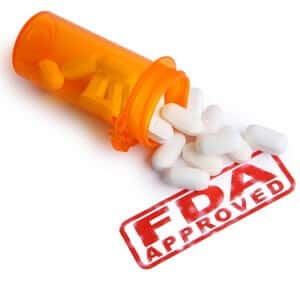
Everyone wants a magic bullet when it comes to serious illness. That’s why doctors and patients are willing to take chances if they think a new medication or medical device could ease pain, or prolong life. Even so, most people assume that the Food and Drug Administration is a tough task master. FDA drug approvals are supposed to be stringent and guarantee both safety and effectiveness. Prepare yourself for a big Ooops!
Beware Fast-Track FDA Drug Approvals:
There is a fascinating loophole in FDA drug approvals. It is called “accelerated approval.” Normally, the FDA requires large clinical trials that can last many months or even years. These randomized, double-blind, placebo-controlled studies are the gold standard for FDA drug approvals. Outcomes are often based on things both doctors and patients care about. Namely, heart attacks, strokes, hospitalizations, longevity or quality of life.
Accelerated approval permits the FDA to grant a green light based on what doctors call “surrogate endpoints.” This might be a lab value such as blood sugar or cholesterol. In other words, a drug might lower bad LDL cholesterol and be granted accelerated approval even if it doesn’t prevent heart attacks and strokes or delay death.
Fast-track designation allows for accelerated approvals. It is supposed to speed drugs and devices to market. The evidence supporting their use may not be as good as people imagine.
Two articles in JAMA describe the limitations of this approval process. Follow-up studies that were supposed to provide more solid support were frequently delayed or abandoned. Those that were completed on time often did not meet the highest standards of research.
What They Found:
The researchers reported that (JAMA, Aug. 15, 2017):
“The FDA granted accelerated approval to 22 drugs for 24
indications. Clinical trials conducted before (n=30) and after
(n=18) approval had similar design characteristics, such as lack of
blinding, randomization, and comparator groups. Of the required
postapproval confirmatory studies, half were completed a
minimum of 3 years after approval, and of these, most showed
some benefit but relied on surrogate measures rather than clinical
outcomes.”
High-risk medical devices were frequently approved on the basis of trials that were not blinded, randomized or controlled (JAMA, Aug. 15, 2017). The authors conclude that such studies need significant improvement.
What to Do?
When your doctor recommends a new medication or suggests a new device such as a pacemaker or joint replacement, find out when it was approved by the FDA. Ask your health professional about the quality of the research supporting the product. The prescriber or the surgeon has a duty to do homework about the quality of the data. Ask about effectiveness data. How many people out of 100 treated get meaningful benefit?
Sometimes it pays to wait awhile so all the side effects can be assessed. It may take a few years for the FDA to learn about unusual complications that did not show up during the fast-track review process.
[JAMA, Aug. 15, 2017]
http://jamanetwork.com/journals/jama/article-abstract/2648631
http://jamanetwork.com/journals/jama/article-abstract/2648630

